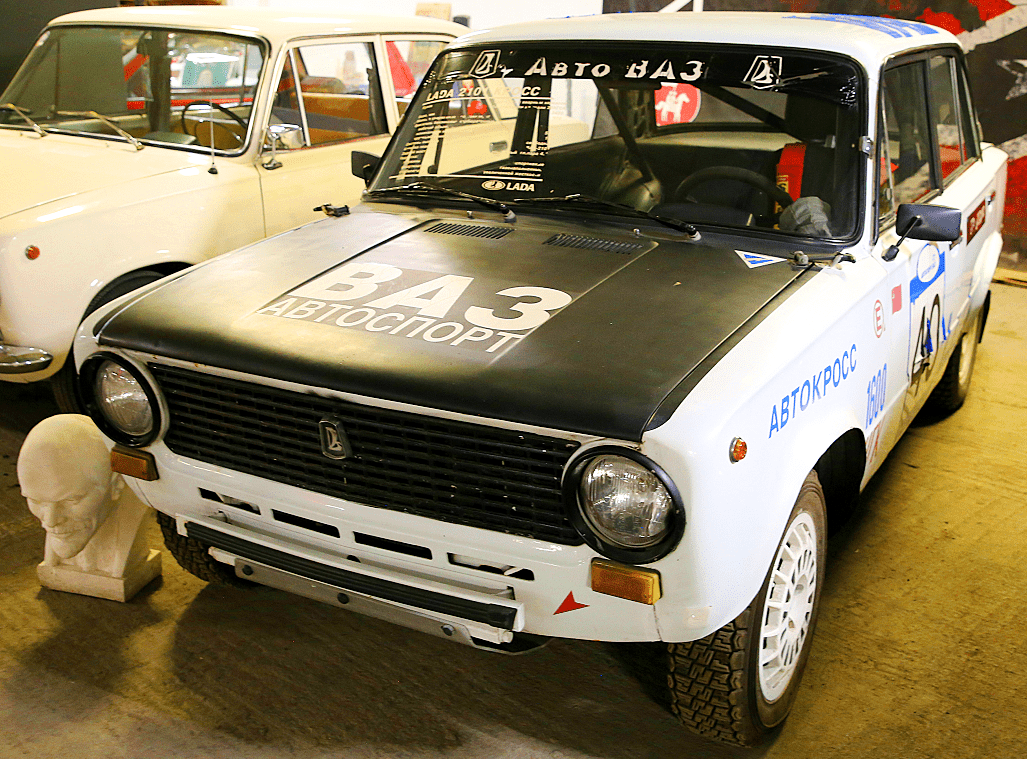VAZ-2101 Kross. Rally version
The VAZ-2101 “Zhiguli”, commonly nicknamed “Kopeyka” (for the smallest Soviet coin, 1/100 of the Ruble), is a compact sedan car (small class, passenger car, model 1 in Soviet classification) produced by the Soviet manufacturer AvtoVAZ and introduced in 1970, the company’s first product.
The car was a heavily modified and licence-built version of the Fiat 124 tailored for the Soviet Union and much of the Eastern Bloc. Subsequently, it was widely exported to the West under the Lada brand. The station wagon version (correspondingly based on the Fiat 124 Familiare) was known as the VAZ-2102.
VAZ-2101 (1970–1982) — first variant was equipped with a 1,198 cc (73.1 cu in) engine (an overhead camshaft design, never used in a Fiat) producing 60 PS (44 kW; 59 hp) and offering a 140 km/h (87 mph) top speed and 0–100 km/h (0–62 mph) in about 20 seconds.
Compared to the Fiat 124, 800 modifications were made in all, including to rear brakes (discs to drums), suspension (for higher ground clearance), carburettor, and some other parts in order to satisfy a wide range of Russian climate conditions, as well as thicker-gauge steel (so the 2101 weighed 945 kg (2,083 lb), the Fiat 90 kg (200 lb) less).
All these models had soft suspension adapted to the local roads that provided a very comfortable ride even on tough gravel roads. Early models included a crank, in case the battery went flat (an item later dropped) and an auxiliary fuel pump.
In a short time Lada became a real hit in Soviet Union. The 2101 (and its first modifications) opened a new era in Russian motoring. Unfortunately, the Togliatti plant could not supply the consumer demand and people had to wait for years to get a chance to buy the car.
Exports began 21 February 1971, to Yugoslavia, with 32 cars sent to Finland, Holland, and Belgium on 30 July. After a competition in the Soviet automotive magazine Za Rulyom (At the Wheel), which drew 1,812 entries, in September 1971 the name Lada (Russian for “harmony”) was chosen, and the export models would be called Lada 1200s.
Production was always behind demand, and price crept up, but by 1980, the wait for a new 2101 was down to a year.












